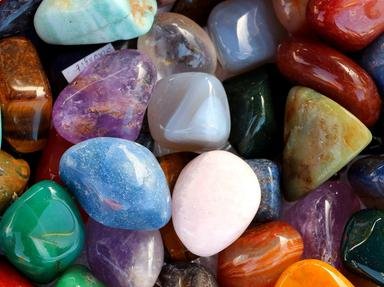Quiz Answer Key and Fun Facts
1. Which of these is not a type of rock that can support the formation of diamonds?
2. With which type of event is lonsdaleite associated?
3. Which of these rocks is associated with the oldest diamonds?
4. How is the age of diamonds determined?
5. Which is an effect of included boron atoms in a diamond crystal?
6. Which is not a known effect of nitrogen atoms incorporated in a diamond crystal?
7. A thermal conductivity test will not identify which diamond simulant?
8. Diamonds have a lower specific gravity than graphite (also a pure carbon crystal aggregate) because...
9. What property of diamond was discovered by scientist Antoine-Henri Becquerel?
10. How did the carbon needed for diamond formation originate?
Source: Author
ragiel
This quiz was reviewed by FunTrivia editor
ozzz2002 before going online.
Any errors found in FunTrivia content are routinely corrected through our feedback system.

